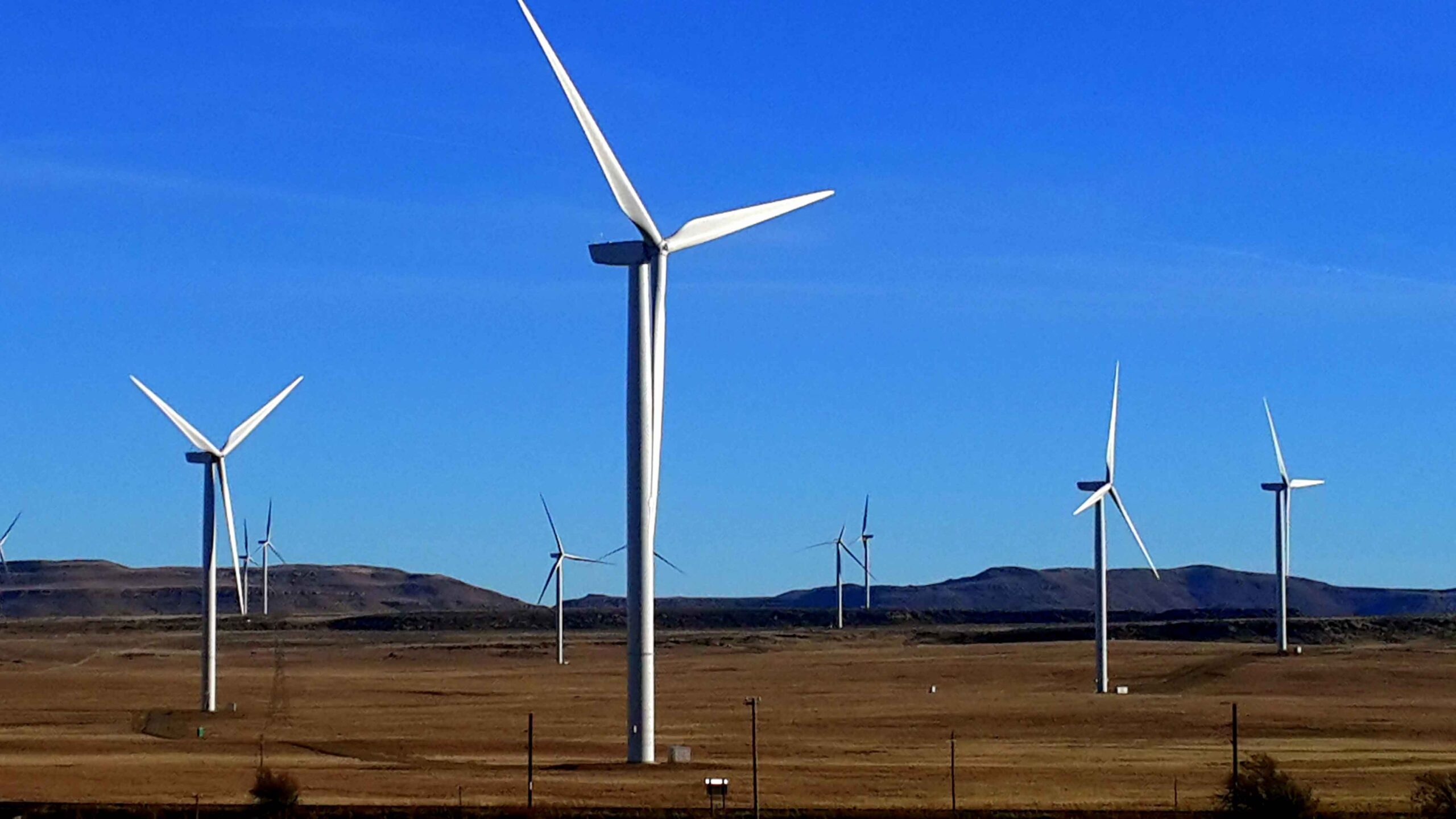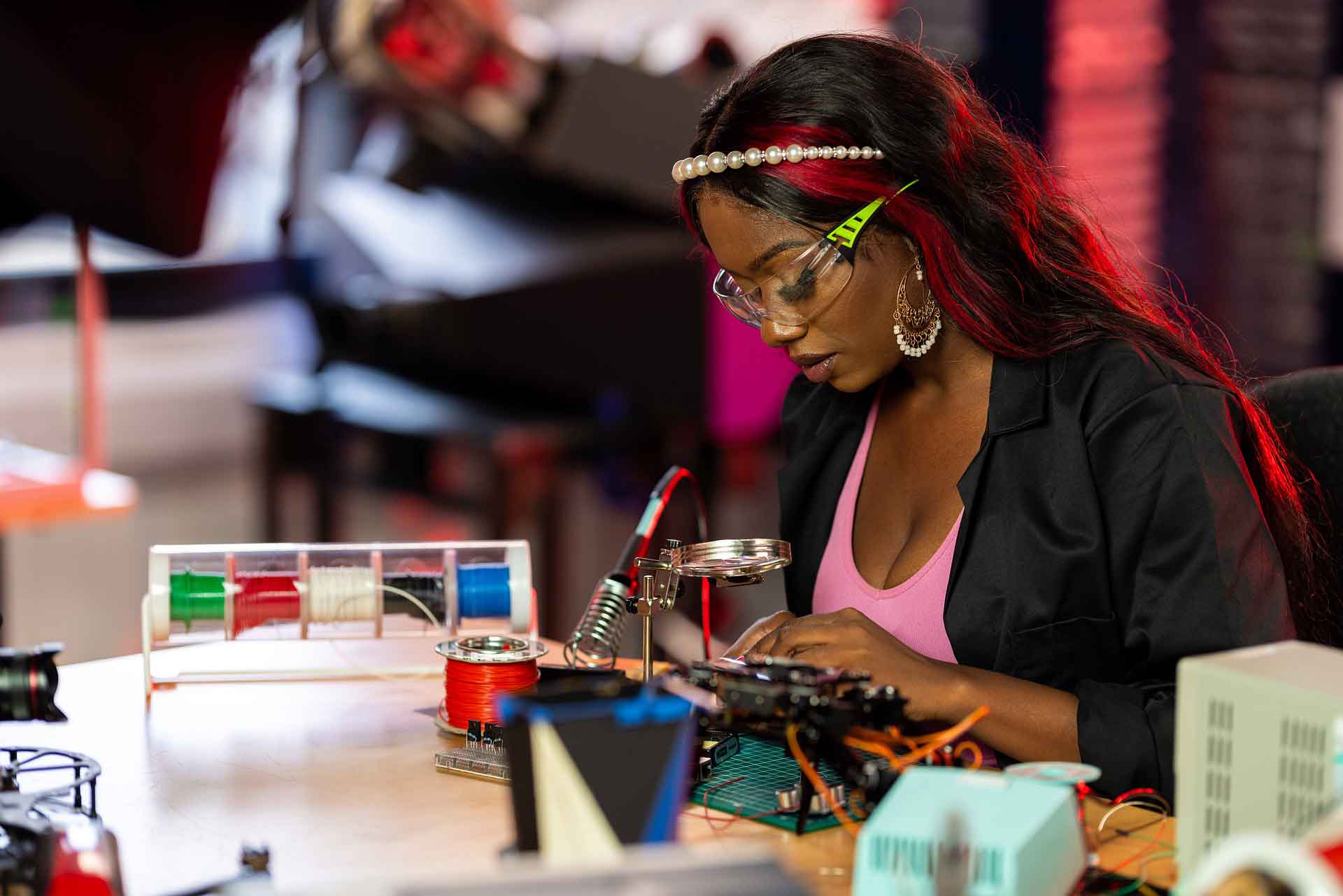South Africa’s 33 wind farms were all built by international turbine manufacturers. Given the limitations of the local manufacturing industry, local companies will need to continue to rely on foreign expertise to expand the country’s wind energy output. The establishment of such partnerships will significantly influence the extent to which future renewable energy projects generate jobs and benefit local communities. In a recent study HSRC researchers led by Krish Chetty looked at two wind farms to analyse how South Africa can best guide a just and inclusive transition to use of local resources. By Andrea Teagle

Hendrik van den Berg, Wikimedia Commons
By 2030, South Africa must install approximately 3 600 wind turbines and 14 million solar panels to meet the 2019 Integrated Resource Plan target of 20 400 MW of additional green energy, according to a GreenCape report. The shift to renewables is necessary for the country to address its energy needs and achieve its carbon reduction commitments. It also has the potential to generate employment and benefit local communities.
However, the need for speed causes friction between priorities. South Africa’s limited manufacturing capacity means that international wind turbine manufacturers will continue to be instrumental in constructing and maintaining new wind farms. But reliance on international partners in the longer term may hinder the development of local manufacturing capacity, write the HSRC’s Krish Chetty and colleagues in a recent paper.
How can South Africa best ensure that wind farms transition to local resources in the longer term and maximise local impact?
To find out, the researchers took a closer look at the successes and challenges of two wind farm partnerships – Cookhouse wind farm in the Eastern Cape and Longyuan-Mulilo De-Aar wind farm in the Northern Cape. They spoke to the public, energy experts in the public and private sectors, project developers, policy makers, and local and international researchers.
The two wind farms were established as part of the Renewable Energy Independent Power Producer Procurement Programme (REIPPPP), which aimed to expand South Africa’s energy sector. Developed in 2011, Cookhouse is a partnership between the Indian turbine manufacturer Suzlon Energy and three local partners: African Clean Energy Developments, African Infrastructure Investment Managers and AFPOC Ltd. Longyuan-Mulilo De-Aar, comprising two wind farms built in 2013 and 2017, respectively, is a partnership between Chinese company Longyuan (60% ownership), and a consortium of South African black-owned companies (40%).
A just transition?
What makes a transition just? In 2019, President Cyril Ramaphosa created the Presidential Climate Commission (PCC) to chart a path to a green economy. The PCC defined a ‘just transition’ in terms of distributive, restorative and procedural justice. Briefly, distributive justice requires that South Africans benefit equitably from the benefits associated with renewable energy, such as job opportunities, skills development and clean energy. Procedural justice requires that communities actively participate in green projects, policies and implementation plans. Restorative justice seeks to address past injustices – for instance, by supporting workers previously employed in coal-based industries and those adversely affected by coal. Chetty and his colleagues analysed the wind farms based on these three components.
The fact that Cookhouse and Longyuan-Mulilo De-Aar are located far from coal stations meant that they could not absorb workers previously employed in the coal industry. However, the authors write that the wind farms advance restorative justice in a broader sense by offsetting ‘a substantial quantity of carbon emissions, [and] contributing to the improved health of surrounding communities and general ecological sustainability’.
Local employment
The study found that Cookhouse and Longyuan-Mulilo De-Aar together offset over a million tons of CO2 per year (384 000 and 619 000 tonnes, respectively). For scale, South Africa emitted 405 million tonnes of CO₂ in 2022. A 2021 modelling paper published in Nature projected that for each one million tonnes of carbon saved in 2020, 226 additional deaths (related to temperature increases) would be prevented between 2020 and 2100 under a baseline emissions scenario.
In addition to reducing emissions, both wind farms achieved distributive and procedural justice through employment and education opportunities and community trusts.
Surrounding communities partly own the two farms. The Cookhouse community owns a 25% stake in the project, while the De Aar Mulilo Community Trust – representing communities within a 50 km radius of the wind farm – holds a 12.5% equity share. In addition to supporting local development projects, the trusts give a voice to the surrounding communities, the research team writes, advancing procedural justice. ‘While [the communities’] share of returns will only be received after the respective loans are paid off, in the interim, the community trusts offer a mechanism to direct the efforts of the wind farm in addressing social concerns.’
Such community trusts should be encouraged, Chetty told the Review, adding that the initiative was widely reported as positive and not restrictive to the growth or management of the wind farms.
The farms also generated jobs for workers in nearby communities. The Longyuan-Mulilo De-Aar wind farms created 700 construction-related jobs and 100 jobs for managing wind farm operations. However, stakeholders pointed out that most jobs were created during the construction phase and, therefore, temporary.
The HSRC researchers suggest that the limited longer-term employment opportunities are partly due to the nature of the contracts with the foreign partners. The fact that international partners are larger and better resourced than local developers has tended to influence the power dynamics in wind farm partnerships, the researchers write. In this case, to secure funding both farms entered into turn-key contracts, making the manufacturers responsible for operating and maintaining the farms after construction. Since skilled local labour is limited, the farms rely primarily on foreign workers and resources for maintenance.
Scaling up local training programmes
“Contracts should not be restrictive in the long term, tying the wind farm to international manufacturers for many years. Such contracts are needed in the short term, but the state needs to expand focused skills development programmes to support these wind farms,” Chetty says.
Both Cookhouse and Longyuan-Mulilo initiated turbine technician training programmes to increase the pool of skilled labour from surrounding communities. Although the output was too low to meet demand, these programmes demonstrate the potential of education programmes to benefit local communities if they are scaled up, the researchers write.
However, Chetty says, it shouldn’t be the responsibility of the wind farm to solve the skills gap. “We need to be looking at partnerships between TVET colleges and the industry, with the industry defining their skills requirements. The education system also has to be revitalised to become more agile and responsive to the needs of the power producers.”
Incentivising local manufacturing
When Longyuan-Mulilo De-Aar was structuring its partnership, South Africa’s broad-based black economic empowerment (BBBEE) requirements stipulated that 40% of farms must be locally owned and 40% of parts must be locally sourced. While intended to ensure inclusivity in local industry, the withdrawal of a potential investor in Longyuan-Mulilo De-Aar elicited concern that the requirements were constraining industry growth.
For this reason, President Ramaphosa initiated a relaxation of these requirements for the sixth bidding window in 2022. However, the authors note that the country’s long-term policy position needs to be clarified. ‘These projects are long-term investments, so the investors need a consistent regulatory outlook, requiring the state to clarify long-term BBBEE regulations,’ they write.
Chetty and his team indicate that, while the BBBEE requirements aimed to promote local inclusivity, the nascent manufacturing sector was ill-prepared to meet the market’s demands, which constrained growth. As was the case in China, South Africa’s manufacturing sector may benefit from tax breaks, subsidies and other incentives to promote global competitiveness.
For instance, the government could incentivise manufacturers like Suzlon and Longyuan to establish local factories to service their wind farms. The government has already taken steps in this direction by establishing Special Economic Zones. This initiative has spurred local tower manufacturing, although less progress has been made with other components, such as blades. “If the local manufacturer were subsidised, it would make their components more attractive than foreign manufacturing plants,” Chetty says.
The team is currently working on two related policy briefs. One focuses on strategies to expand manufacturing, while the other aims to streamline the process through which municipalities and independent power producers can access climate finance.
Researcher contact: Krish Chetty, a research manager in the HSRC’s Equitable Education and Economies research division


